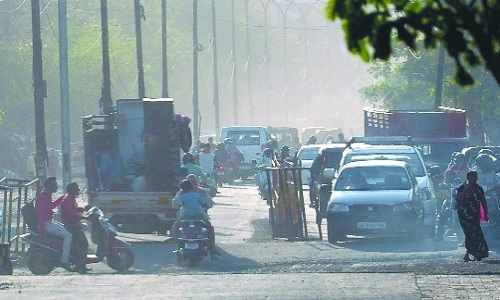Nagpur tops the list for PM10 emission among all three non-attainment cities of Vidarbha: Study
| Date :28-Sep-2022 |

By Kaushik Bhattacharya
Nagpur city is the highest contributor to Particulate Matter 10 (PM10) concentration as compared to other three non-attainment cities of Vidarbha, claimed a study conducted by researchers of Utkal University and National Institute of Advanced Studies (NIAS).
Dr Saroj Kumar Sahu, Assistant Professor, Utkal University, Bhubaneswar and Dr Gufran Beig, Founder, Project Director, SAFAR and ex-researcher, NIAS jointly conducted a study on city level PM10 emission pattern for Nagpur, Chandrapur and Amravati.
According to the study, the estimated PM10 emission load in Nagpur is found to be 105 Giga-gram per year (Gg/yr) followed by Chandrapur (78 Gg/yr) and Amravati (53 Gg/yr).
“In Nagpur, coal burning thermal power plants have outnumbered other sectors in PM10 emission. Windblown-road dust, construction demolition, municipal solid waste burning and household burning are among the multiple sectors contributing in the particulate matter emission,” Dr Sahu told The Hitavada.
In Nagpur, thermal power plants are the biggest source of PM10 emission with 34%. Windblown-road dust emits 21% air pollution, unorganised other sectors 16%, residential emission 16%, industry 6.9% and transport 6.7%.
In unorganised other sectors, the construction sector emits 9% and municipal solid waste burning emits 5% emerged as largest sources of PM10 emission as compared to subsector slum cooking (7%) and street vendors (4%) in residential sectors, the study revealed.
Similarly, Chandrapur has the highest emission from captive thermal power plants and is the largest source of PM10 load (46%) followed by Windblown-road dust (21%) and residential sector (11%). Crop residue burning sector (3.5%) is also responsible for the PM10 emission in Chandrapur, said the study.
Recently, due to degraded air quality, the Central Pollution Control Board (CPCB) has enlisted Chandrapur as a critically polluted city, for which special attention must be given to improve the air quality, it stated.
For Amravati city, the major source for PM10 there is windblown-road dust which emits the highest 38% pollution. Power plants comes second in the list for Amravati with 22% emission, followed by residential sector (16%) and transport (11%). However, the relative emission is comparatively less as compared to the other two cities but the per capita emission is still a concern, said the study.
“Emission from thermal power plants is a major concern for all these three cities which are already comes under the non-attainment list of CPCB. Shutting down of old thermal power units, use of better and quality coal and adoption of latest technologies are the only option to reduce the pollution impact over these cities through thermal power plants,” said Dr Sahu.